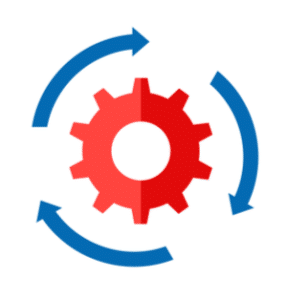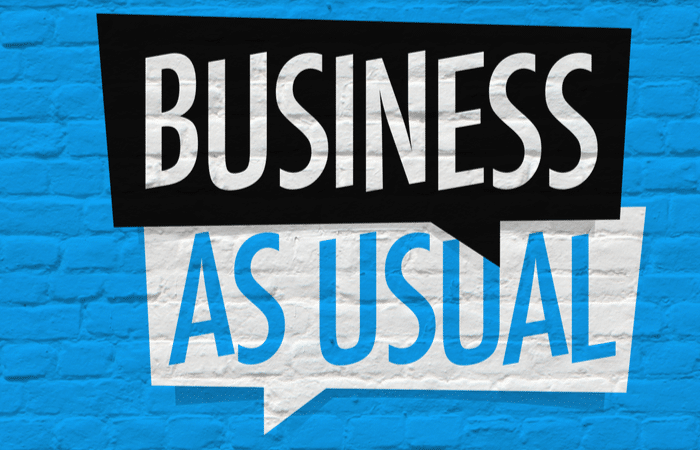How Workflow Automation Can Build Business Continuity After COVID-19
The issue of business continuity, of how to return to business-as-usual after the COVID-19 pandemic was a core theme at the Future of Compliance Virtual Summit.
With the sudden upheaval of entire organizations turned out of their familiar offices, and everyone using their home PCs with questionable security and unreliable internet access, COVID-19 quickly proved how ill-prepared traditional business continuity plans are.
But now that we’re three months into this pandemic, it was apparent from the questions, comments, and polls in all the sessions how organizations across the globe, across all industries, are preoccupied with how best to return to normal (or something close to it). It’s clear from what was said by many of those who attended that while normalcy will resume, in due course, the question remains “how will we get there?”
A way forward seems daunting. Especially with overarching concerns for the strength of the global economy, a potential COVID-19 “second wave,” and regulators chomping at the bit to correct anyone who figured COVID-19 was a regulatory “free pass.”
A shift to proactive resilience
Brian McGovern, General Manager, Workflow Solutions, at Mitratech addressed these concerns in the first session of the day, How Workflow Automation Can Drive Business Continuity Best Practices in Times of Crisis and Beyond. A key challenge for many businesses? They’re having to rethink their entire approach to what business continuity plans ought to be.
Most continuity plans are reactive, focused on pivoting after a crisis has hit and what you need to do to adapt. A new approach is Business Continuity Transformation™ which can help an enterprise exercise actual proactive resilience.
 What exactly is Business Continuity Transformation? Brian described BCT is a framework for sustaining business-as-usual during crises and disruptions while also encouraging optimization during times of normalcy. He explained how risk and compliance teams are uniquely suited to implementing this new framework, using the right tools to effectively track obligations, ensure changes to operational practices are communicated, eliminate informal and manual processes (especially any that still rely on paper), and take control of mission-critical information.
What exactly is Business Continuity Transformation? Brian described BCT is a framework for sustaining business-as-usual during crises and disruptions while also encouraging optimization during times of normalcy. He explained how risk and compliance teams are uniquely suited to implementing this new framework, using the right tools to effectively track obligations, ensure changes to operational practices are communicated, eliminate informal and manual processes (especially any that still rely on paper), and take control of mission-critical information.
Brian pointed out that “the current climate is going to accelerate the decline of paper-based processes.” Many organizations have struggled to scale up or reproduce certain critical office-based processes with staff now working from home.
Yet the stopgaps temporarily put in place could very likely expose organizations to a host of operational, commercial, legal, reputational, and even regulatory risks. However, these processes are often business-critical to a variety of departments – sales, finance, logistical, manufacturing, legal, marketing – that simply can’t operate without them.
What are the best practices to put in place?
The feedback from many was that this issue had already been recognized, but while plans to address it were being drafted in many organizations, many were looking for guidance on best practices. How do you actually go about simplifying and streamlining your business-critical manual processes while working with a widely distributed workforce?
In addressing these concerns, Brian related how workflow automation technology is the cornerstone of creating a more agile form of business continuity that can withstand times of significant upheaval. He showed how technology solutions can be used to capture, define, and automate these processes, so users can achieve the same results whether based in the office, at home, or on the move.
With a workflow automation solution embedded in not just your continuity planning, but also everyday processes, becoming significantly more agile in both times of normalcy or upheaval is extremely achievable.
How workflow automation works in risk and compliance processes
Varun Ghai, a Senior Product Consultant at Mitratech, took the floor to demonstrate exactly how workflow automation can solve the challenges associated with complex manual processes. Third-party vendor risk is an issue that many risk and compliance professionals struggle to manage; Varun showed how the centralized architecture of Mitratech’s best-in-class TAP Workflow Automation environment provides a standardized and transparent framework for delivering workflows that provide the flexibility these users would value.
 He also pointed to the enormous amount of time saved by workflow automation when you’re not emailing individual vendors or manually manipulating Excel data to create a report. Automated emails, built-in risk registers, and dynamic reporting dashboards were just some of the TAP features covered.
He also pointed to the enormous amount of time saved by workflow automation when you’re not emailing individual vendors or manually manipulating Excel data to create a report. Automated emails, built-in risk registers, and dynamic reporting dashboards were just some of the TAP features covered.
Brian explored how to prioritize projects that could benefit the most from this approach (“Make sure it’s something that people care about”), and how best to design, build and publish workflows that allow staff to adapt and thrive in a challenging and changing situation.
At the end of the session, an attendee asked the question, “Where should the first step be if a company wants to implement workflow automation in pursuit of a new continuity framework?” To which Brian unabashedly responded, “Call me.”
[bctt tweet=”Business Continuity Transformation is a framework for sustaining business-as-usual during crises and disruptions while also encouraging optimization during times of normalcy – Brian McGovern” via=”yes”]


